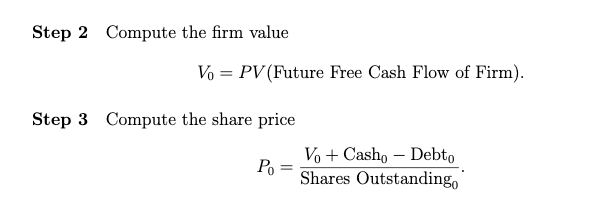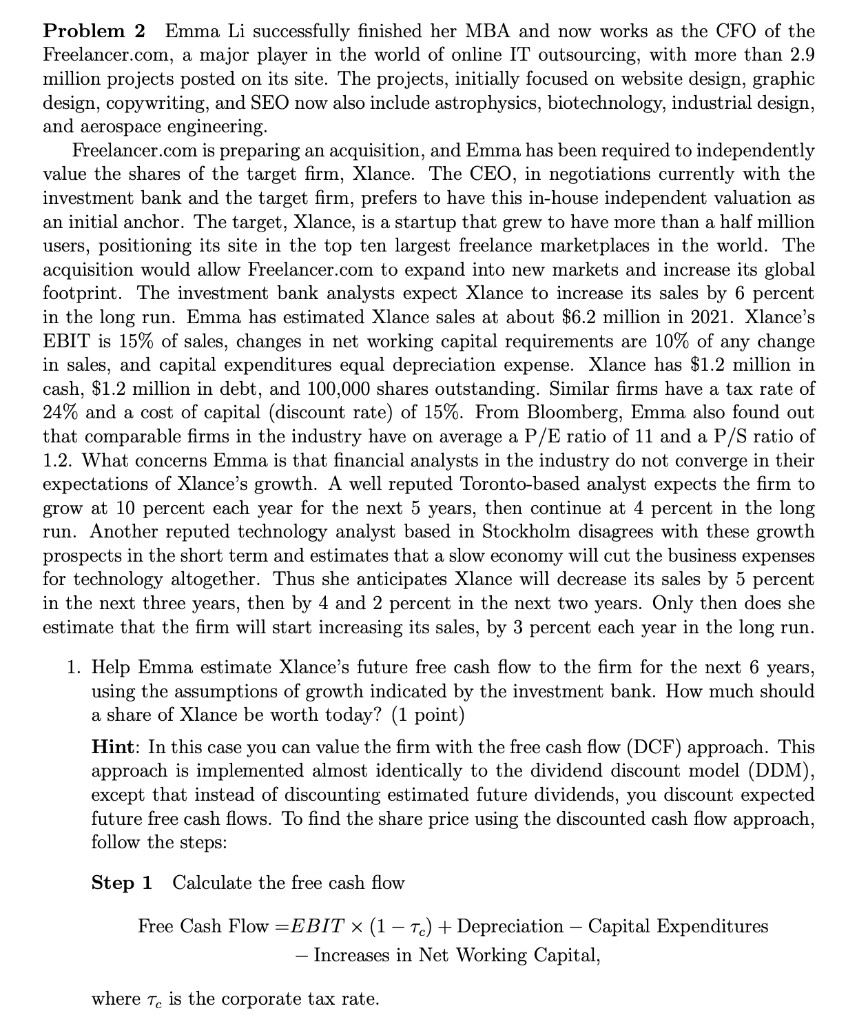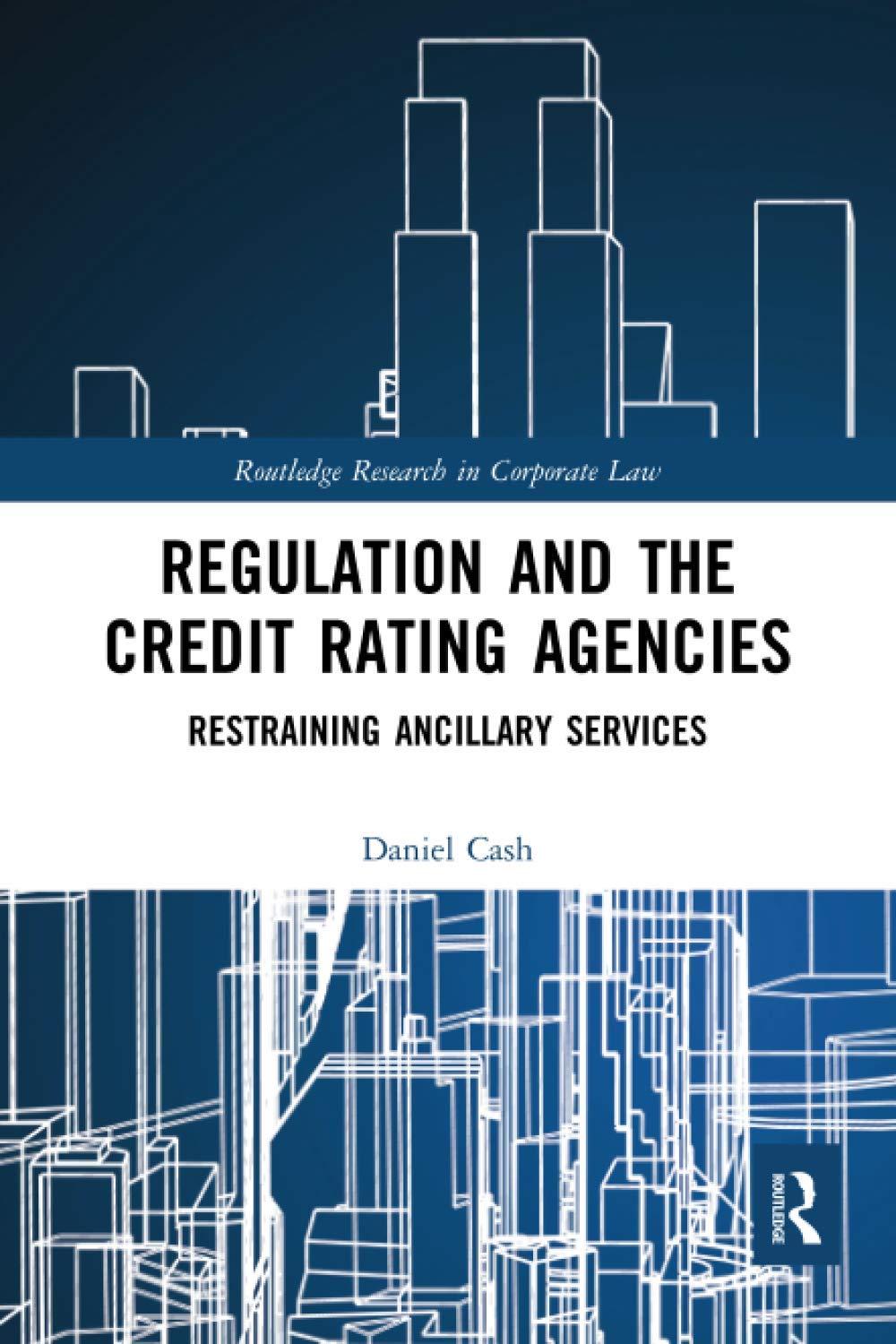 The solution to question 1
The solution to question 1

Step 2 Compute the firm value Vo = PV (Future Free Cash Flow of Firm). Step 3 Compute the share price V + Casho Debto P. Shares Outstanding, Problem 2 Emma Li successfully finished her MBA and now works as the CFO of the Freelancer.com, a major player in the world of online IT outsourcing, with more than 2.9 million projects posted on its site. The projects, initially focused on website design, graphic design, copywriting, and SEO now also include astrophysics, biotechnology, industrial design, and aerospace engineering. Freelancer.com is preparing an acquisition, and Emma has been required to independently value the shares of the target firm, Xlance. The CEO, in negotiations currently with the investment bank and the target firm, prefers to have this in-house independent valuation as an initial anchor. The target, Xlance, is a startup that grew to have more than a half million users, positioning its site in the top ten largest freelance marketplaces in the world. The acquisition would allow Freelancer.com to expand into new markets and increase its global footprint. The investment bank analysts expect Xlance to increase its sales by 6 percent in the long run. Emma has estimated Xlance sales at about $6.2 million in 2021. Xlance's EBIT is 15% of sales, changes in net working capital requirements are 10% of any change in sales, and capital expenditures equal depreciation expense. Xlance has $1.2 million in cash, $1.2 million in debt, and 100,000 shares outstanding. Similar firms have a tax rate of 24% and a cost of capital (discount rate) of 15%. From Bloomberg, Emma also found out that comparable firms in the industry have on average a P/E ratio of 11 and a P/S ratio of 1.2. What concerns Emma is that financial analysts in the industry do not converge in their expectations of Xlance's growth. A well reputed Toronto-based analyst expects the firm to grow at 10 percent each year for the next 5 years, then continue at 4 percent in the long run. Another reputed technology analyst based in Stockholm disagrees with these growth prospects in the short term and estimates that a slow economy will cut the business expenses for technology altogether. Thus she anticipates Xlance will decrease its sales by 5 percent in the next three years, then by 4 and 2 percent in the next two years. Only then does she estimate that the firm will start increasing its sales, by 3 percent each year in the long run. 1. Help Emma estimate Xlance's future free cash flow to the firm for the next 6 years, using the assumptions of growth indicated by the investment bank. How much should a share of Xlance be worth today? (1 point) Hint: In this case you can value the firm with the free cash flow (DCF) approach. This approach is implemented almost identically to the dividend discount model (DDM), except that instead of discounting estimated future dividends, you discount expected future free cash flows. To find the share price using the discounted cash flow approach, follow the steps: Step 1 Calculate the free cash flow Free Cash Flow =EBIT x (1 Tc) + Depreciation - Capital Expenditures - Increases in Net Working Capital, where Te is the corporate tax rate
 The solution to question 1
The solution to question 1






